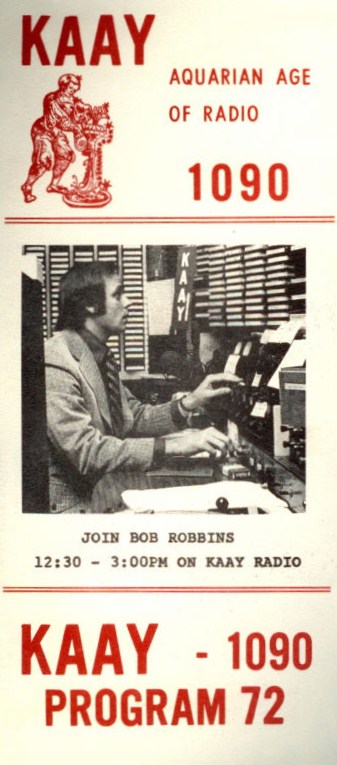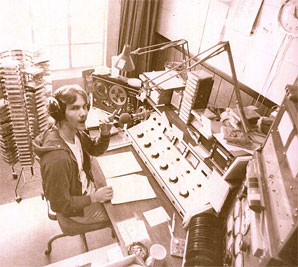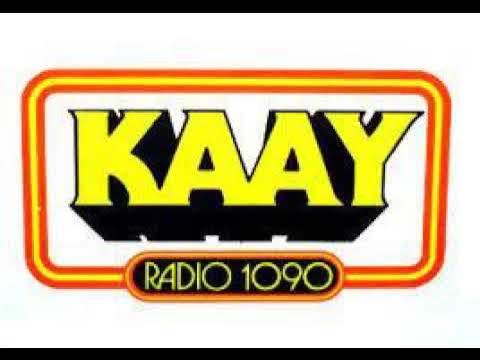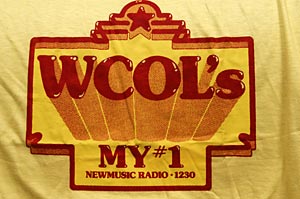-
 play_arrow
play_arrow
AircheckRadio Aircheck Radio
-
 play_arrow
play_arrow
Quid pro bros Vox
-
 play_arrow
play_arrow
Miami-Fort Lauderdale Barry Wright
The Mighty 1090: KAAY’s Top 40 Triumph in Little Rock
In the pulsating heart of the 1960s and 1970s, KAAY-AM 1090, known as “The Mighty 1090,” stood as a colossus of Top 40 radio in Little Rock, Arkansas, its 50,000-watt signal blanketing much of the United States and beyond. Launched as KTHS in 1924 in Hot Springs, the station reinvented itself in 1962 under LIN Broadcasting, adopting the KAAY call letters and a dynamic Top 40 format that captured the zeitgeist of a generation.  From its studios on 7th Street in Little Rock and its transmitter in Wrightsville, KAAY became a cultural lifeline for Arkansas’s youth, delivering the latest hits from The Beatles, The Supremes, and The Rolling Stones with a fervor that resonated across the state and into 40 states at night. Its innovative programming, including the legendary late-night show Beaker Street, set it apart as a beacon of musical discovery, while its charismatic disc jockeys and community engagement made it a beloved institution. KAAY’s influence extended far beyond Arkansas, with its signal reaching Cuba during the 1962 Bay of Pigs crisis, where it was used for U.S. government propaganda, cementing its place in radio history. This was a station that didn’t just play music—it shaped lives and launched careers, earning a storied reputation among industry insiders and fans alike.
From its studios on 7th Street in Little Rock and its transmitter in Wrightsville, KAAY became a cultural lifeline for Arkansas’s youth, delivering the latest hits from The Beatles, The Supremes, and The Rolling Stones with a fervor that resonated across the state and into 40 states at night. Its innovative programming, including the legendary late-night show Beaker Street, set it apart as a beacon of musical discovery, while its charismatic disc jockeys and community engagement made it a beloved institution. KAAY’s influence extended far beyond Arkansas, with its signal reaching Cuba during the 1962 Bay of Pigs crisis, where it was used for U.S. government propaganda, cementing its place in radio history. This was a station that didn’t just play music—it shaped lives and launched careers, earning a storied reputation among industry insiders and fans alike.
KAAY’s Top 40 format was a masterstroke of programming, blending high-energy music with personality-driven delivery that made it the dominant contemporary station in Arkansas. The station’s playlist, rooted in the Billboard Hot 100, was a vibrant tapestry of rock ‘n’ roll, rhythm and blues, and pop, featuring artists like Elvis Presley, The Four Tops, and The Beach Boys. But what elevated KAAY above its peers was its innovative approach to programming. The station employed two full-time newsmen—a rarity for the time—delivering fast-paced newscasts at a quarter to and a quarter after the hour, scooping competitors with timely updates. Programs like Ear on Arkansas, a radio parody of a local TV show, showcased KAAY’s knack for original comedy, while contests, jingles, and promotions kept listeners glued to their radios. The crown jewel was Beaker Street, hosted by Clyde Clifford (Dale Seidenschwarz), which broke from Top 40 after 11 p.m. to play progressive rock, blues, and jazz—music rarely heard on AM radio. Broadcast from the Wrightsville transmitter to save costs, Beaker Street’s eclectic mix, paired with eerie sound effects and Henry Mancini’s Charade score as background, created a cult following that stretched from Des Moines to Havana. This programming diversity, coupled with a commitment to engaging the youth market, made KAAY a powerhouse that commanded a 30% market share in 1971.
The talent roster at KAAY was a veritable who’s-who of radio personalities, many of whom used the station as a springboard to bigger markets. Disc jockeys like Bob Robbins, Sonny Martin, Mike McCormick, Doc Holiday, Jonnie King, Buddy Karr, and Ken Knight brought infectious energy and charisma to the airwaves, turning KAAY into a playground of creativity. Bob Robbins, who joined in 1972 from Georgia, became a local legend for his morning show antics, later achieving fame as a country music DJ in Little Rock. Sonny Martin, music director for much of his 11-year tenure, crafted shows with newsman George J. Jennings that were as spontaneous as they were entertaining, from naming zoo animals to hosting “skunk festivals.” Clyde Clifford, the voice of Beaker Street, was a pioneer of underground radio, his laid-back style and adventurous playlists inspiring a generation of DJs. Many of these personalities moved to larger markets like Dallas or Memphis, with KAAY’s reputation as a talent incubator earning praise in trade publications like Radio & Records. Station manager Pat Walsh fostered a loose, fun environment, allowing jocks to push boundaries—sometimes to the point of colorful reprimands for on-air slip-ups. KAAY’s ability to nurture talent was a testament to its professional setup and the creative freedom afforded by LIN Broadcasting, making it a magnet for ambitious broadcasters.
The Little Rock community embraced KAAY as more than a radio station—it was the soundtrack of their lives, a cultural hub that united teenagers and young adults across Arkansas. Listeners tuned in on car radios, at diners, or in their bedrooms, eagerly awaiting the station’s Top 40 charts, printed weekly and distributed at local record stores. Events like football rallies, where DJs tossed footballs from downtown bank buildings, or concert promotions at Barton Coliseum, featuring acts like Three Dog Night, brought KAAY’s personalities into the community. The station’s involvement in local events, from Razorback football broadcasts to charity drives, made its DJs household names. Beaker Street was particularly impactful, with fans in rural Arkansas and beyond sending letters to Clifford from as far as Newfoundland and Cuba, drawn to its countercultural vibe. KAAY’s 50,000-watt nighttime signal made it a companion for late-night listeners across the Midwest and South, fostering a sense of shared identity among a generation navigating the turbulent 1960s. The station’s role in broadcasting Voice of America to Cuba during the Cuban Missile Crisis further elevated its status, with President John F. Kennedy honoring its executives for their service. For Arkansans, KAAY was a source of pride, a station that captured their state’s spirit while connecting them to a broader musical world.

KAAY’s reputation among radio industry insiders and fans was nothing short of legendary, often cited as one of the greatest Top 40 stations of its era. Radio Ink listed KAAY alongside giants like WLS Chicago and WABC New York for its powerful signal and influence, noting its ability to dominate the airwaves across the western U.S. and beyond. Industry observers praised its programming innovations, particularly Beaker Street, which prefigured the album-oriented rock format of the FM boom. The station’s technical prowess, with a clear-channel signal reaching 29 countries, made it a case study in AM radio’s potential. Fans, meanwhile, cherished KAAY for its accessibility and personality, with blogs like mighty1090kaay.blogspot.com preserving vintage recordings and stories long after its Top 40 era ended. Advertisers flocked to KAAY for its lock on the youth market, with jingles for local businesses becoming part of Arkansas’s cultural fabric. By the late 1970s, however, FM’s rise began to erode AM listenership, and KAAY’s shift to adult contemporary and oldies formats signaled the end of its Top 40 reign. On April 3, 1985, Clyde Clifford returned for a final Beaker Street hour, closing with Joni Mitchell’s The Circle Game, a poignant farewell to an era.
The legacy of KAAY’s Top 40 era endures in the memories of its listeners and the careers it launched, a testament to a station that was both a local treasure and a national phenomenon. Its ability to blend mainstream hits with groundbreaking programming like Beaker Street, coupled with its deep community roots, made it a model for regional stations aspiring to greatness. The station’s archives, includin g over 700 reel-to-reel tapes digitized by former program director Barry McCorkindale, preserve its jingles, news clips, and DJ banter, offering a window into a time when radio was king. For those who grew up with KAAY, it was more than a station—it was a friend, a tastemaker, and a cultural force that defined an era. As one listener put it, “KAAY was the soundtrack of our childhood,” a sentiment echoed by countless Arkansans who still tune into memory when they recall The Mighty 1090.
g over 700 reel-to-reel tapes digitized by former program director Barry McCorkindale, preserve its jingles, news clips, and DJ banter, offering a window into a time when radio was king. For those who grew up with KAAY, it was more than a station—it was a friend, a tastemaker, and a cultural force that defined an era. As one listener put it, “KAAY was the soundtrack of our childhood,” a sentiment echoed by countless Arkansans who still tune into memory when they recall The Mighty 1090.
Written by: Barry Wright
Similar posts
Most Liked Airchecks
Events
Support Aircheck Radio
Copyright 2025 Aircheck Radio is a proud listener supported 501(c)(3) nonprofit organization





Post comments (0)